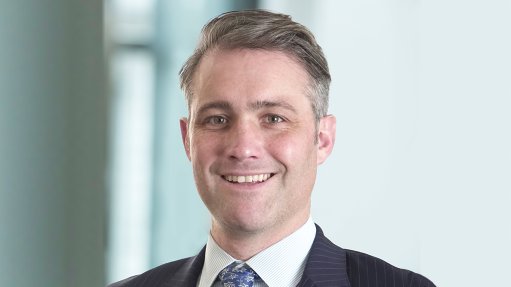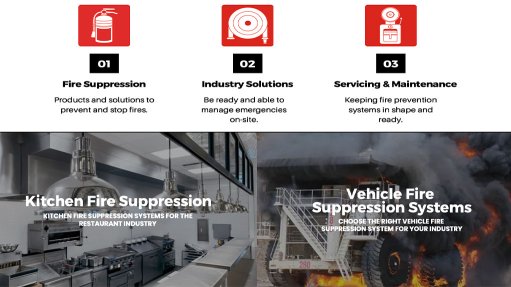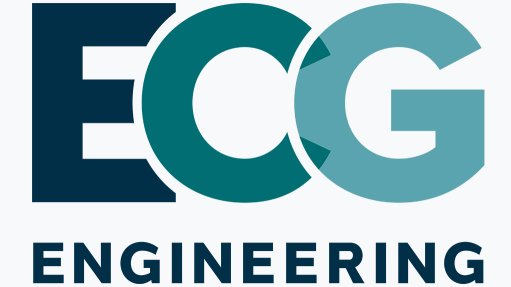Sasol prioritises on water stewardship projects
Integrated energy and chemicals company Sasol has made water management a strategic priority as water management is a security-of-supply and regulatory risk to the company worlwide.
Speaking at Sasol’s 2013 year-end financial results presentation last month, Sasol CEO David Constable noted that the com- pany was cognisant that there were regulatory and voluntary commitment challenges ahead and Sasol had made progress in environmental initiatives, including water stewardship, which was evident in its ongoing R5-million investment in the Boloka Metsi project, in the Emfuleni municipality, in Gauteng.
“In assessing our opportunities to enhance water security, we concluded that even significantly reducing the water demand from our direct operations would not have the largest impact on reducing the predicted water shortages across the Boloka Metsi catchment. “For this reason, we are focusing on multistakeholder partnerships to implement water resource management for the benefit of the catchment and its users,” said Sasol New Energy’s sustainable water senior manager Bob Kleynjan.
“The Boloka Metsi project aims to fix leakages in public and private water systems and to increase public awareness of water issues and conservation, create employment and improve capacity within the Emfuleni municipal structures,” Constable explained.
The main challenge facing Emfuleni was that between 44% and 50% of water used in the municipal area could not be accounted for, he noted, mentioning that the project planned to enable a 15% water saving for the Emfuleni municipality – one of the four big municipalities in Gauteng. If successful, the Boloka Metsi project would reduce Emfuleni’s yearly water expenses by about R62-million, of which a portion would be ploughed back into sustaining the project that would, in turn, facilitate continued savings.
Sasol noted that the first water savings of a cumulative R4.5-million had been realised, as leaking plumbing was repaired in 50 000 houses in Sebokeng and Evaton, Sasolburg. The project would now be self-funded, demonstrating the sustainabilty of the project’s ring-fenced-savings funding model.
The concept of water offsetting had been positively received by the Parliamentary Portfolio Committee on Water and Environmental Affairs and further development of the water offsetting policy by the Department of Water Affairs (DWA) was being supported by Sasol New Energy.
“The Emfuleni water conservation partnership is part of Sasol New Energy’s water stewardship programme and underlines our commitment to sustainable water management,” Kleynjan highlighted.
He pointed out that the public awareness aspect of the partnership was important. “We need to create a culture where water is valued. To make this a reality, the partnership has appointed about 20 local water conservation warriors. They are community liaison officers who will work in the community using awareness material developed for the project.”
The project was expected to last three years; however, Kleynjan highlighted that the key to its success was building a sustainable model, which municipalities could implement in future.
At municipal level, the aim was to leave a legacy in terms of technical, project management and procurement skills, while at community and individual level, local people would be trained in plumbing and other skills – the project employed about 50 plumbers. At national level, the project model could be replicated in other municipalities, stated Sasol.
Kleynjan stressed that Sasol regarded itself not only as a company but also as part of a bigger community. As a result, its approach to water challenges extended beyond the company’s factory gates.
Water Security Measures
Fresh water resources are globally accepted as being scarce and under increasing pressure. Sasol emphasises that it is acutely aware of the responsibility that comes with being a large industrial water user, particularly in South Africa, where its largest operations are situated.
“Sasol’s refining and chemicals manufacturing processes require water primarily to regulate temperatures and generate steam. Supported by Sasol Technology, our oper- ations are working hard to improve our direct water use and water efficiency through technological improvements, as well as the reuse and recycling of water and the development of more water-efficient plants,” says Sasol international energy, new business development and technology senior group executive Lean Strauss.
He stated that the integrated Vaal river system was the lifeblood of the domestic, industrial and agriculture sectors, concentrated in Gauteng and its surroundings.
Being the engine room of South Africa’s economy and arguably one of the key economic nodes of Africa, Sasol’s demand from this system accounts for about 4% of the Vaal river supply capability, which, in turn, represents 80% of Sasol’s global water requirements.
As a result, Sasol realised the value of becoming actively involved in helping to address water issues in the Vaal river catchment. The company is exploring water-related challenges in this area in a holistic manner by engaging with stakeholders through catchment management forums. Sasol also actively participates in the Vaal River Strategy Steering Committee, which informs decisions regarding infrastructure, planning and resource management.
Owing to ageing infrastructure, water losses by municipalities in the Vaal river catchment can be as high as 45%. Sasol has concluded three multistakeholder partnership agreements to help reduce these physical water losses. These collective-action partnerships include repairs of water leaks in households, maintaining or upgrading distribution systems and educational campaigns at schools. To date, Sasol has committed R8-million and leveraged an additional R9-million through partner funding to implement these water conservation projects.
Enabling Municipalities
“For our flagship partnership, the savings would equate to about a 15% reduction in water demand for the Emfuleni municipality and will avoid expenses of about R60-million yearly, compared with the municipality’s 2010 baseline. Through these actions beyond our factory fence line, we aim to enable municipalities and to unlock substantial savings, which will subsequently be used to fund and implement further water conservation projects.
“Sasol is also a founding member of the Strategic Water Partnership Network (SWPN) in South Africa, a collaborative platform for the DWA and several key private- and public-sector partners,” notes Strauss, adding that the objective of the SWPN is to address water risks facing South Africa and reduce the current gap between water supply and demand.
“Responding to water-security risk is a business imperative that Sasol is determined to meet head-on. We are doing this not only for ourselves, but for our consumers,” stresses Strauss.
He mentions that, to effect this aim, Sasol has endorsed the United Nations Global Compact CEO Water Mandate, which is a public–private initiative aimed at assisting companies in the development, implementation and disclosure of water sustainability policies and practices. The mandate presents a comprehensive approach to corporate water stewardship and is a voluntary initiative developed to inspire businesses to positively contribute to sustainable water resources management.
“As signatories to the CEO Water Mandate, we recognise that inadequate water management, investments and governance pose a range of challenges and risks to our business operations. These include business continuity risks and reputational and regulatory risks, as well as health risks for our employees and those living in the communities where we operate,” explains Strauss.
While Sasol represents a diverse range of industries and geographies, the company is united in its belief that improving water resources management and governance are urgent global priorities, he says. In this regard, Sasol supports international efforts to improve water management and the exchange of information on experiences, lessons and best practices.
Article Enquiry
Email Article
Save Article
Feedback
To advertise email advertising@creamermedia.co.za or click here
Comments
Press Office
Announcements
What's On
Subscribe to improve your user experience...
Option 1 (equivalent of R125 a month):
Receive a weekly copy of Creamer Media's Engineering News & Mining Weekly magazine
(print copy for those in South Africa and e-magazine for those outside of South Africa)
Receive daily email newsletters
Access to full search results
Access archive of magazine back copies
Access to Projects in Progress
Access to ONE Research Report of your choice in PDF format
Option 2 (equivalent of R375 a month):
All benefits from Option 1
PLUS
Access to Creamer Media's Research Channel Africa for ALL Research Reports, in PDF format, on various industrial and mining sectors
including Electricity; Water; Energy Transition; Hydrogen; Roads, Rail and Ports; Coal; Gold; Platinum; Battery Metals; etc.
Already a subscriber?
Forgotten your password?
Receive weekly copy of Creamer Media's Engineering News & Mining Weekly magazine (print copy for those in South Africa and e-magazine for those outside of South Africa)
➕
Recieve daily email newsletters
➕
Access to full search results
➕
Access archive of magazine back copies
➕
Access to Projects in Progress
➕
Access to ONE Research Report of your choice in PDF format
RESEARCH CHANNEL AFRICA
R4500 (equivalent of R375 a month)
SUBSCRIBEAll benefits from Option 1
➕
Access to Creamer Media's Research Channel Africa for ALL Research Reports on various industrial and mining sectors, in PDF format, including on:
Electricity
➕
Water
➕
Energy Transition
➕
Hydrogen
➕
Roads, Rail and Ports
➕
Coal
➕
Gold
➕
Platinum
➕
Battery Metals
➕
etc.
Receive all benefits from Option 1 or Option 2 delivered to numerous people at your company
➕
Multiple User names and Passwords for simultaneous log-ins
➕
Intranet integration access to all in your organisation


















